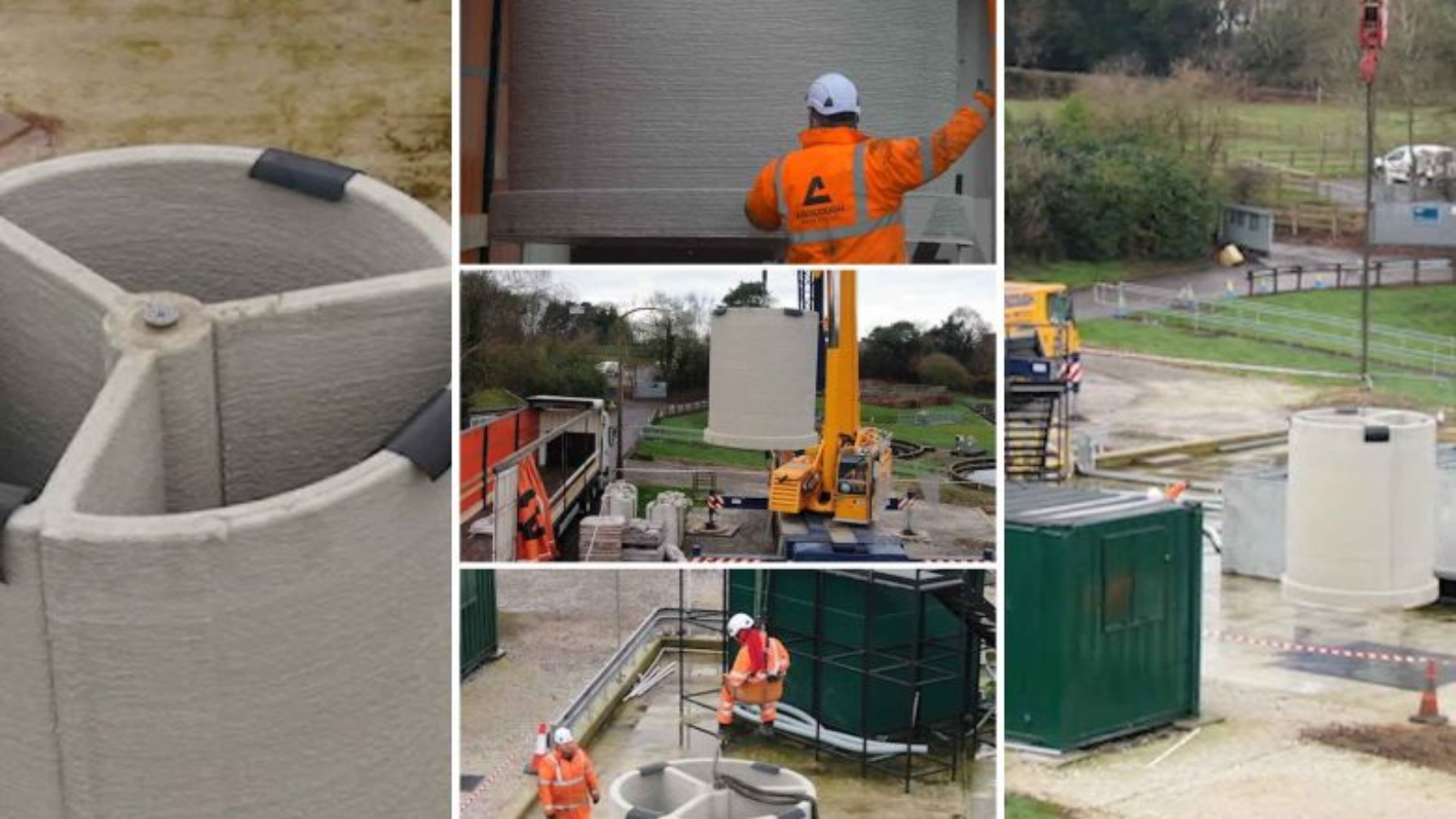An ongoing investigation led by British water services company United Utilities, ChangeMaker3D, Manchester Metropolitan University’s PrintCity and Scottish Water aims to determine the benefits and impacts of using 3D printing for water infrastructure components. The initiative, called Water Industry Printfrastructure (WIP), has been underway since 2023 and is on track to wrap up in early 2025.
Since the Printfrastructure project launched, the aforementioned partners have been exploring the potential applications and impacts of polymer and concrete 3D printing technologies in the water industry. This exploration has consisted of several innovative use cases and studies, including 3D printing water infrastructure replacement parts using a combination of 3D scanning and polymer AM at the Manchester Metropolitan University’s PrintCity facility.
To date, three replacement parts have not only successfully undergone testing and trials, but are now in use at United Utilities. The three parts are a wastewater jet nozzle, a CCTV skid plate and a trough for water monitoring instruments. 3D printing has also been used to manufacture laboratory equipment for United Utilities and Scottish Water. In the water industry—like other sectors—3D printing offers unprecedented benefits for the production of replacement components as it allows for in-house and on-demand production, ultimately reducing reliance on complex supply chains and minimizing downtimes caused by missing stock or delivery times.
Manufacturing on Demand
Nick Hurst, technical specialist at Manchester Metropolitan University’s PrintCity, said: “This collaborative project is helping turn 3D printing into business-as-usual, an approach that will be game-changing for the sector. Some of the project’s outcomes—such as the successful printing of polymer spare parts—are already making a difference on the ground and delivering significant carbon, cost and labour savings. PrintCity has been working with the operational teams to enhance the designs, improving durability and ensuring parts can be maintained more effectively.”
On the concrete 3D printing front, United Utilities opened a temporary concrete 3D printing hub at its Wigan Wastewater Treatment Works. This hub officially opened in June 2024 thanks to a collaboration with Gloucester-based ChangeMaker3D, which has developed a concrete 3D printing platform. There, the partners have overseen the production of several concrete infrastructure parts, including combined sewer overflow chambers and Industrial Emissions Directive containment walls.
“The Water Industry Printfrastructure project is transforming 3D construction printing from an innovation into an accessible tool to support everyday operations, drive efficiencies and help meet environmental goals,” added Lisa Mansell, chief engineer, innovation and carbon, United Utilities. “We are seeing tangible results from the printing processes developed by the project team, which have potential for adoption at scale. The technology presents many more exciting opportunities for the sector, and we look forward to showing just what is possible.”
The Water Industry Printfrastructure project, which has received over £1.5 million in funding, is to be completed in February 2025. As it nears its end, the partners behind the innovative exploration will be sharing project insights in a webinar on November 28, 2024. “After three years of collaborative research, feasibility studies and rigorous testing, we are on the cusp of being able to scale-up this exciting technology and look forward to showing the sector what can be achieved with 3D printing,” concluded Ian Watt, capital investment net zero manager, Scottish Water.
You might also like:
Holcim Polska completes its first concrete 3D printed water tank: Holcim Polska’s Marketing Manager, Rafal Latawiec, underscored the significance of this achievement, saying, “We are proud to bring technological innovation to Poland and Europe, especially in projects of such high social and ecological importance.” With Holcim’s ongoing commitment to driving sustainable solutions, the company is positioned to lead in shaping how 3D printing technology is utilized in essential infrastructure projects worldwide.
* This article is reprinted from 3D Printing Media Network. If you are involved in infringement, please contact us to delete it.
Author: Tess Boissonneault



Leave A Comment